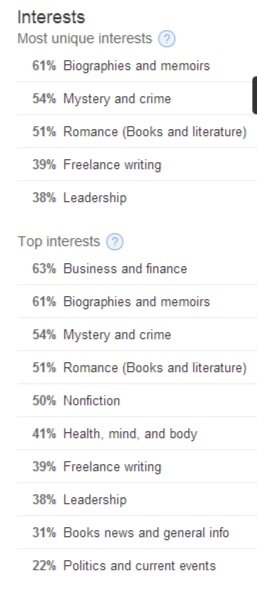We need to eat. Forget it.
We need to go pee. We won’t.
We need to sleep. Yeah, right.
Writers go from one discomfort and life-draining behavior to another when we work on our stories. But then comes the dreaded moment when we must write a book description.
Suddenly the pain is too much to bear.
Most of us choke. But why? Maybe we feel that explaining the book will make it sound so bad (to us) that we’ll question why we even began writing it in the first place?
The problem with such a bad habit is this.
The fourth most important step to sell books online is the book description.
Fourth, huh? How do I figure that?
1) Write a great (professionally edited) book.
2) Have a great cover.
3) Put a few glowing reviews directly above the…
wait for it…
4) Yup. The book description.
The reader will know they’re on to something special when they spot a cool cover and enthusiastic responses from real readers. But the book description is where you’ll either close the sale or lose them. That means you need to treat it with the same respect you showed your story.
I want to talk about some critical steps we can all take to craft the best possible book description. And at the end of the post I want to share a new idea I had. I’m trying it out now and I think you should too.
Why is a great book description important?
Let’s first define what I mean by a “great book description.”
A great book description will help you sell books.
That’s why it’s so important. So for this post we’ll be honing in on the actual sale like a (super-friendly!) sniper.
Be warned. Part of what I’m talking about is number-crunching. Part is craft. There may even be some art to it. But the goal here is to give you all the info you need to produce an effective book description that sells books.
So. Rubber, meet Road.
How to write a book description that sells books
Tip 1:
Get reviews before you launch your book. What do reviews have to do with a good book description? We’ll get to that in a sec.
Reviews should live right above your product description. Don’t rely on the retailer’s reviews section to sell books. They build their product pages to sell a variety of products, not just books. Book pages need testimonials in a clear and obvious place — just like the back cover and flaps of real books.

Tip 2:
Using the reviews, craft your description. Show the potential buyer just how right the reviewers are! Act as a mirror to a couple of the key terms/phrases that your reviews use. If a review calls your book “an enlightening romp through one man’s middle life” then you can verify that in the book description by using words like “enlighten” and “middle life.” It’s a great way to subtly say, “That reviewer is so right!”
Tip 3:
The first sentence should be as good as your book’s first sentence. Remember how you pounded on the first sentence of your book until it was just right? Do that with your description too.
Tip 4:
Use terms that the online retailer’s search engine will love. Yes, we’re getting into uncomfortable territory here. Where’s the art in all of this, Ben? That’s up to you to find. But I’m obligated to tell you that Amazon scans your book description for terms that help its search engine find your product.
So be sure to include terms that reflect the genre you’ll be placing the book in. If your book is the story of a reporter investigating the death of her cousin at the hand of a serial killer at the start of World War II, then be sure you include terms like investigative journalism, World War II and serial killer in your description.
By the way, that’s my mom’s book, The Last Train to Paris. Go Mom!
There’s a cool way to check on what terms Amazon readers like to search for. Just use Amazon search! Enter a term that applies to your book. You’ll see a whole bunch of suggestions. Amazon is essentially telling you that these terms are what their readers are searching for. Use that to your advantage and find a word or term that’s a good fit. Choose a couple and put them in your book description.

So I should advise my mother to include the terms World War 2 historical fiction in her description. It’s appropriate to her book and it ranks high when people begin to type “Word War 2”. Of course, being my mother, she will ignore my advice.
Tip 5:
Target the shopper, not the reader.
Aren’t they the same? Probably, but not necessarily. I learned as a writer of books for young people that the book description must appeal to the adult who’s buying the book. Not the kid who’ll read it. A cousin of mine, Nerissa Nields, wrote a book that has “gift” written all over it, titled How to be an Adult. Yeah college graduates’ parents might want to jump on that one.
Tip 6:
Test! Post the description to your favorite online hangouts and ask for feedback. Send an email to trusted resources. Yes, that includes family and friends, as long as they have a good track record for giving constructive criticism.
I’ve found the community for BookGoodies on Facebook and the Createspace forums to be packed with people who love to give useful feedback.
If you’ve read this far then you might want me to cut to the chase and just get to this “new idea” I mentioned earlier.
Here it is…
Tip 7:
Don’t write an excellent book description. Write two excellent book descriptions.
Why?
The first will be for your launch audience. The second will be for the long-run.
What’s a launch audience? It’s the audience you know you have access to from the get-go. It can include your email list, your Facebook followers, etc. Did you read my post about Twitter analytics that help you identify your target audience? In a nutshell you can use Twitter to find out the specific interests of your followers. If you can identify specific interests of your followers then you can use words and terms that resonate with them.
Yup. That’s a breakdown of my Twitter follower’s interests.
Go read the post. It lays out just how incredible this data is. It’s key to our never-ending quest to reach people who might be interested in our books. I wish Facebook offered the same robust insights, but they took the opportunity to charge us for targeted marketing.
Tip 8:
Tweak! Never stop adjusting the book description of your books. The beautiful thing about self publishing is that it allows you to make fast adjustments based on good data. If your book is suddenly newsworthy because of world events, then by all means head in and edit it! If a new term starts catching on that applies to your book, use it! You get the idea.
Conclusion:
A book description isn’t some alchemical element that could blow up in your face if you call forth the wrong incantation. It also won’t work if you just write, “Me book be gooder than your thinking it could of!” Find a process that works for you. Use your talent to write and use your curiosity about your audience to dig into what will make them more likely to click the Buy button.
By Ben Zackheim
Note: This post contains two affiliate links (in Tips 4 and 5), both of which are links to books on Amazon. One book is by my cousin, the other book is my mother’s. They’d better be fine with this, or Thanksgiving is going to be very uncomfortable this year.
[divider divider_type=”gradient”][/divider]
You might also like:
Amazon has a bridge to sell ya!
The $1.1 Million question: Is KDP Select worth it?



Excellent post, as always, Ben! More food for thought, and more reasons why I need to spend more time working on marketing. Okay, now I hate you :D
Thanks Rebecca! I think…;-)
As long as you don’t sacrifice writing time, I think it’s a good idea to dedicate a little slice of the day for getting marketing tasks done. But I always advise you stay inside your comfort zone when it comes to online outreach of any kind. I’m still not comfortable on Facebook with my own page and it shows!